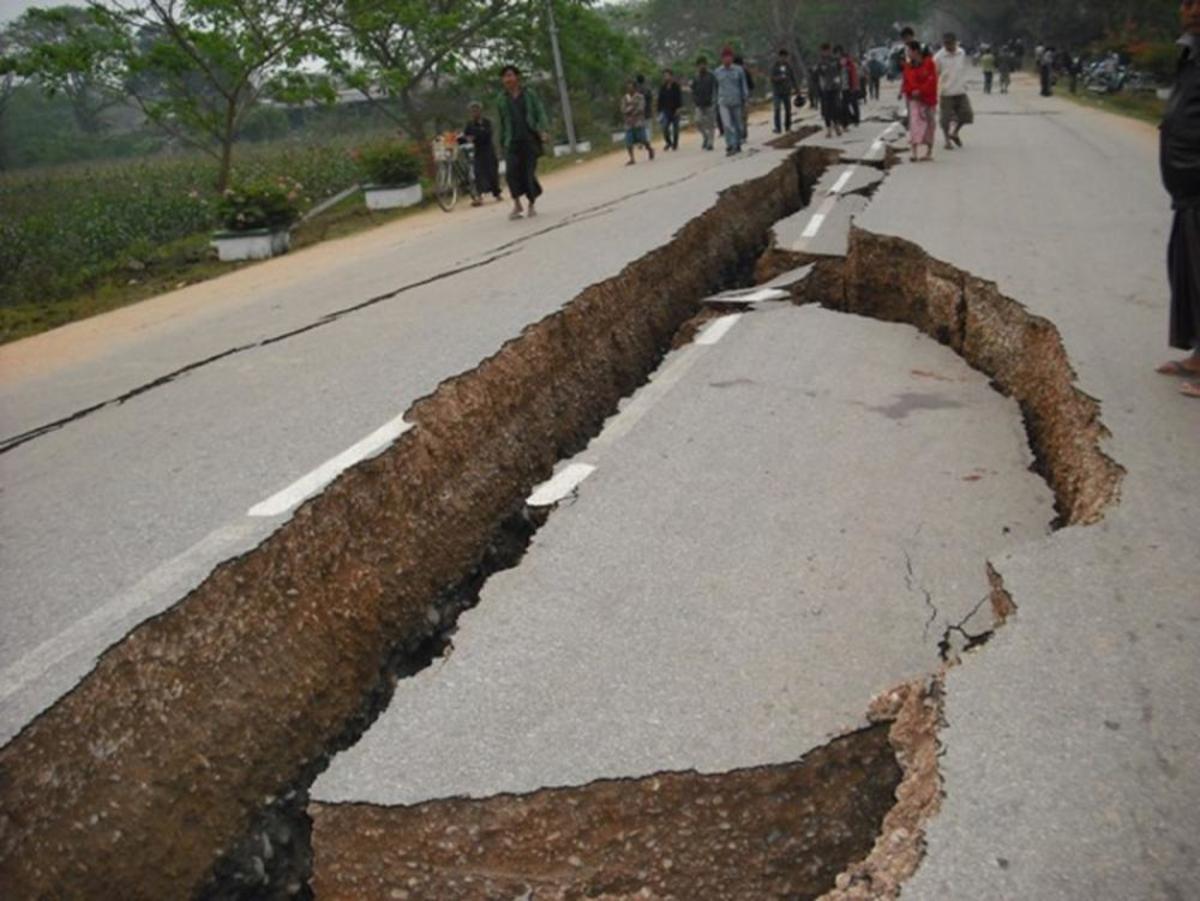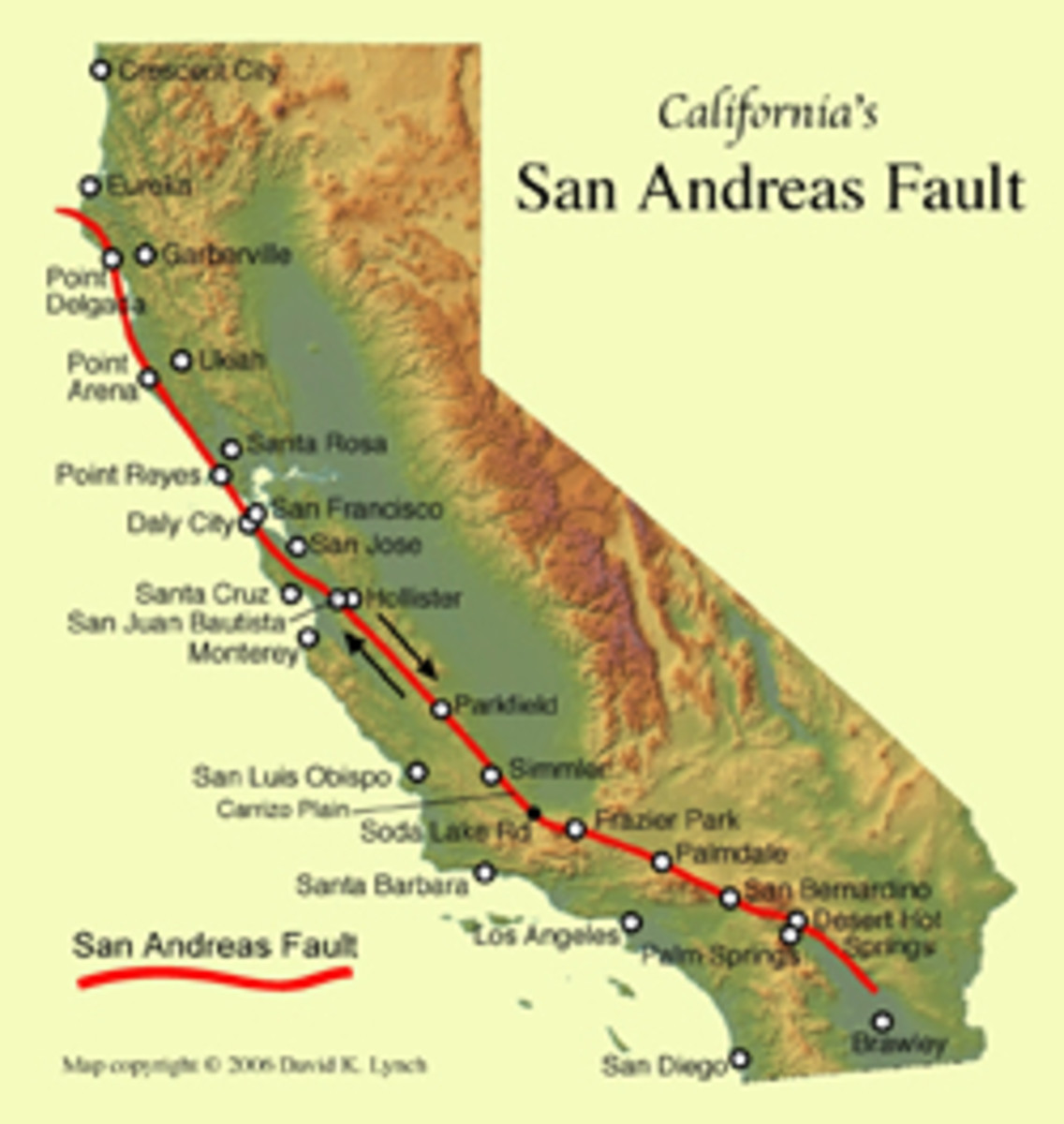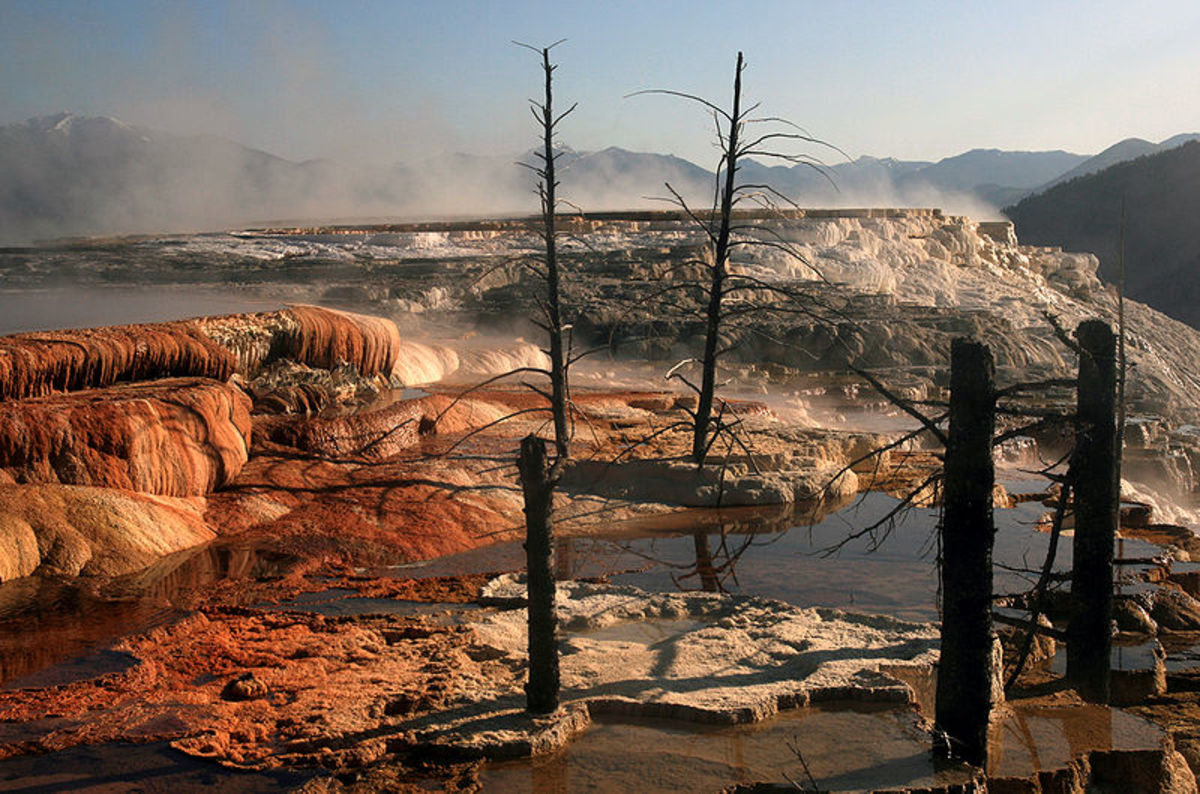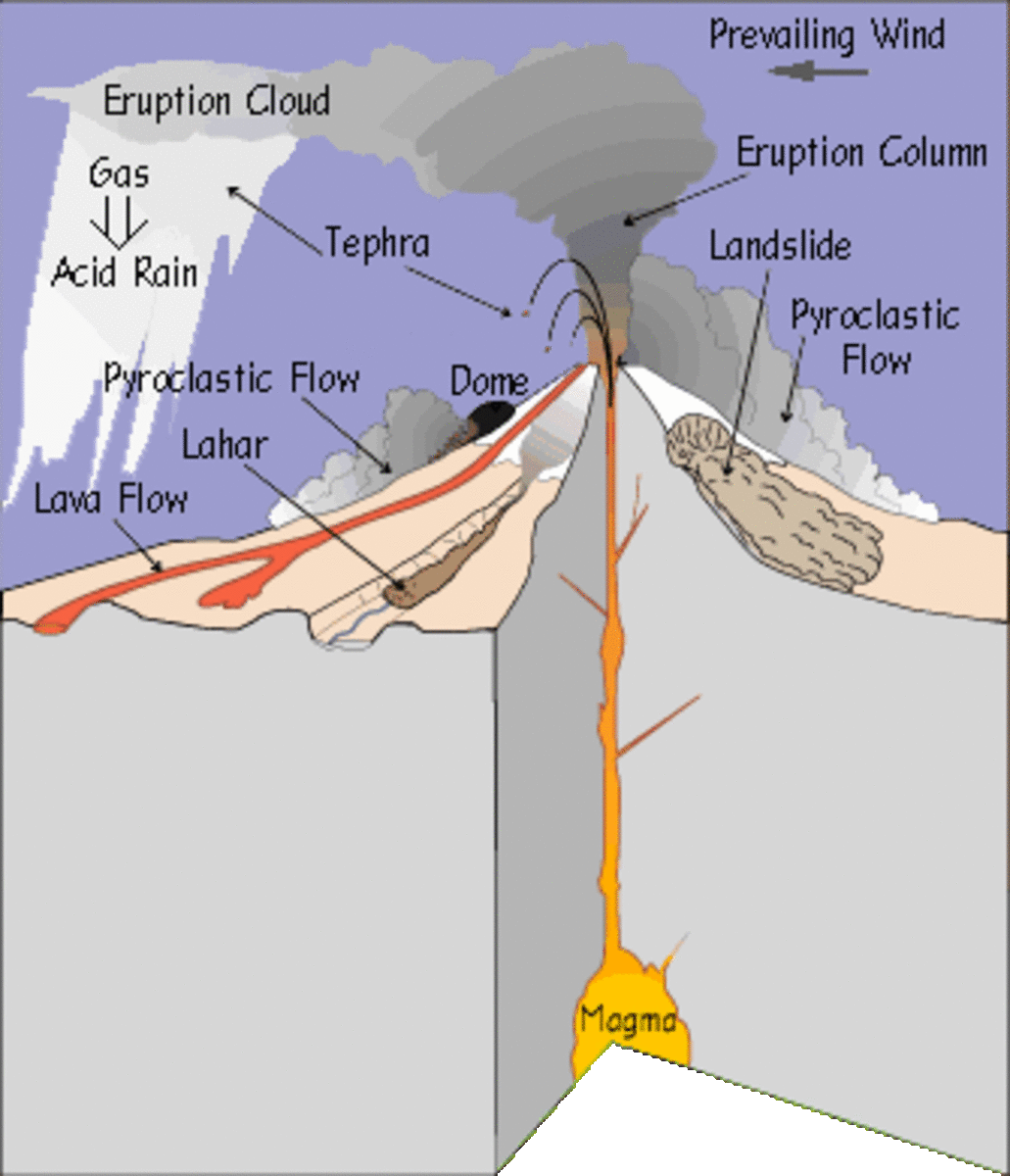Earthquake Review and Forecast for March 2016
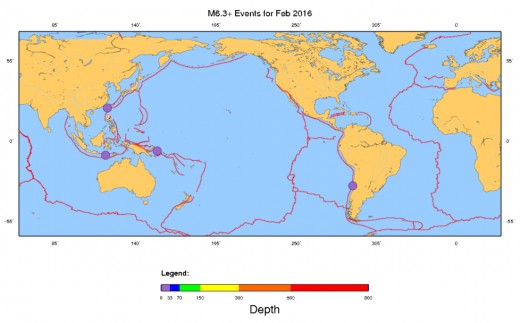

A record month for inactivity...
Last month I forecast two things of note. One was to be wary of the 5th or 6th of February because there are often deadly quakes on one of those two days. The second would be that the month would be at least average (produce at least anywhere from one to three earthquakes of at least 6.8 in magnitude).
February turned out to be an odd month for earthquakes. The deadliest, and tied for the largest, earthquake of the month did fall on February 5, when a 6.4 magnitude earthquake occurred in Taiwan and, due to the collapse of a poorly built apartment complex, resulted in the death of at least 117 people.
There were no earthquakes of 6.5 magnitude or larger. Normally there are four such earthquakes in an average month. Looking at months over the course of the last 16 years (2000-2015), there were six such months without quakes of that size. So what didn't happen in February 2016, also didn't happen for six out of 192 months. That is once every 32 months or 3.125% of the time. In other words, that was a fairly uncommon non-event.
So, instead of us seeing as many as 3 or 4 earthquakes of at least 6.8 magnitude as I may have appeared to suggest last month, there were zero events and none even in the 6.5-6.7 magnitude range. This may or may not denote a slow-down of large seismic activity as I suggested earlier in a recent hub or two. The jury is still out on that.
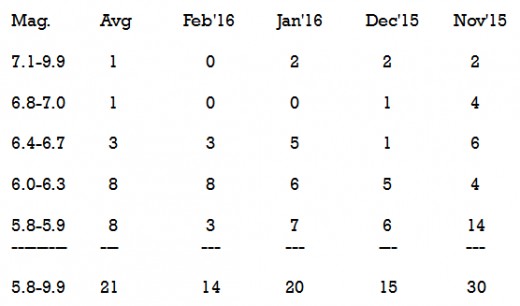
..significant events in the U S of A..
At least as far as Oklahoma is concerned, February was a bit noteworthy for large earthquakes since they had a 5.1 magnitude event occur there on February 13. That was the largest earthquake in that state since a 5.6 magnitude temblor occurred in 2011. There was also a 5.5 magnitude earthquake in that state back in 1952.
Back in July 1952, there was a 7.5 magnitude earthquake in Grapevine, California. On February 24, 2016, there was a 4.9 magnitude event near Wasco, California. On February 16, 2016, there was a 4.8 magnitude earthquake 6 miles WNW of Big Pine, California. That was the location of a huge earthquake back in 1872.
So, that is mostly all there is to talk about for the month of February, 2016.
..and on the horizon..
March may be more interesting due to a solar eclipses that occurs on the 9th of the month. My research shows a link to earthquakes of large size occurring within 1,000 kilometers of the center of annular or total solar eclipse shadow paths. I have found that they occur 6 times more often than what would normally be expected, within that 2,000 km wide eclipse shadow band, during a window of 6 years following the eclipse.
The longest amount of time between such an eclipse and a subsequent earthquake that I have noticed was for the Boxing Day earthquake of magnitude 9.1 back in December 2004. The eclipse that it was apparently related to occurred 6 years and 4 months before. The center of the shadow path for that eclipse passed 240 kilometers from the epicenter of the future earthquake. The shortest amount of time (that I am aware of) between an annular or total solar eclipse and a significant earthquake event occurred in early August 1133 AD in England. The earthquake happened 1 day and 16 hours after the center of the eclipse path passed 361 kilometers from the future epicenter. Earthquakes of any significant size are rare in England, but that one was described as “violent”.
There are two primary time periods to watch in March for possible large scale earthquake activity. One is just one or two days following the eclipse (on the 10th and 11th). Another time to watch is from the last ½ of March 24th through the 27th (all based on Greenwich time). Other possible times (less likely) are the last 1.5 days of the month, the first 1.5 days of the month, and the last ½ of the 14th and first ½ of the 15th. That's 9.5 days out of a total of 31 days in March (or 30.6% of the month) when significant earthquake activity should be more likely.
Historically, when it comes to the largest earthquakes of 7.75 or greater, February is the slowest month for seismic activity (I should have known better when I said “at least average” a month ago). The first week of that month is an exception however. Looking at earthquakes of at least 6.8 magnitude but for March, activity may not be much more seismically active, but it is a better bet.
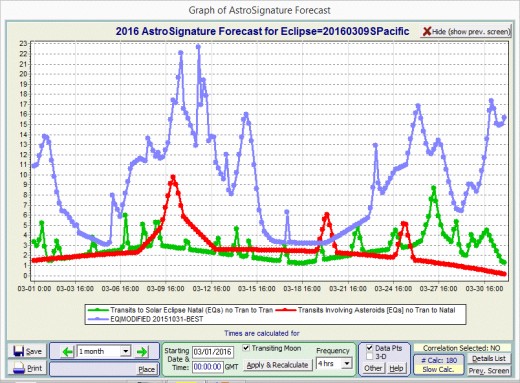
© 2016 Joseph Ritrovato

